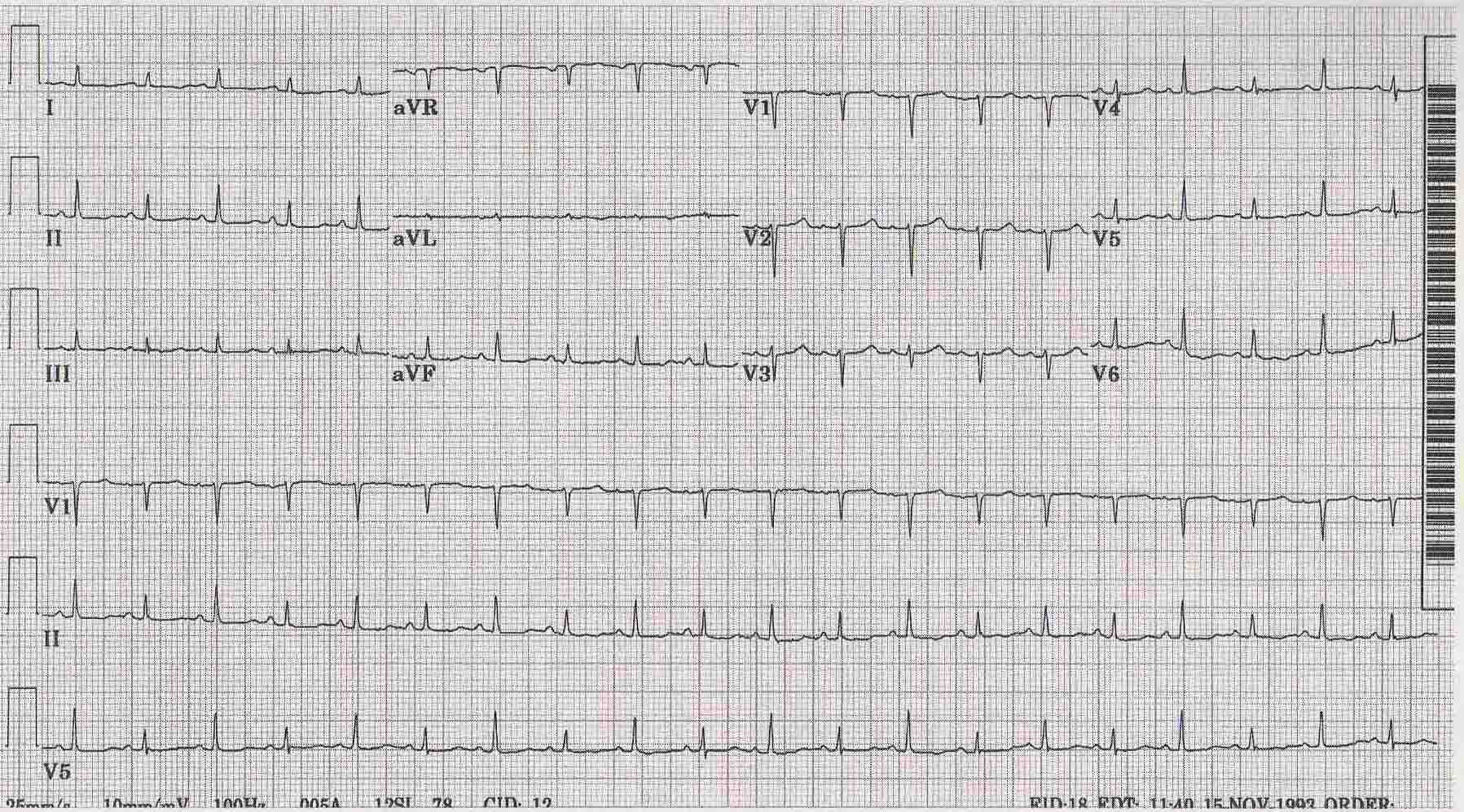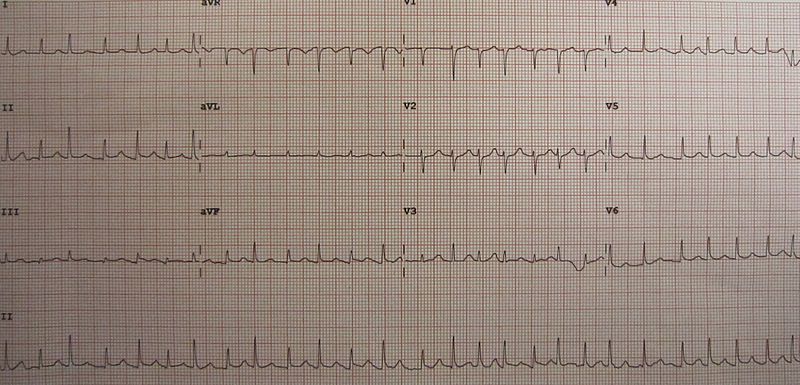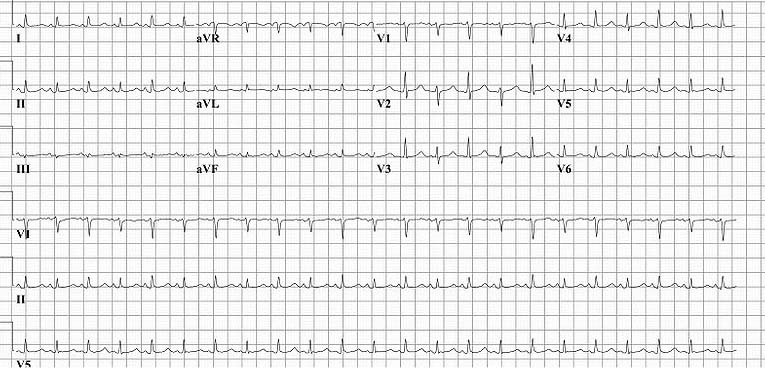P wave alternans
|
WikiDoc Resources for P wave alternans |
|
Articles |
|---|
|
Most recent articles on P wave alternans Most cited articles on P wave alternans |
|
Media |
|
Powerpoint slides on P wave alternans |
|
Evidence Based Medicine |
|
Clinical Trials |
|
Ongoing Trials on P wave alternans at Clinical Trials.gov Trial results on P wave alternans Clinical Trials on P wave alternans at Google
|
|
Guidelines / Policies / Govt |
|
US National Guidelines Clearinghouse on P wave alternans NICE Guidance on P wave alternans
|
|
Books |
|
News |
|
Commentary |
|
Definitions |
|
Patient Resources / Community |
|
Patient resources on P wave alternans Discussion groups on P wave alternans Patient Handouts on P wave alternans Directions to Hospitals Treating P wave alternans Risk calculators and risk factors for P wave alternans
|
|
Healthcare Provider Resources |
|
Causes & Risk Factors for P wave alternans |
|
Continuing Medical Education (CME) |
|
International |
|
|
|
Business |
|
Experimental / Informatics |
Editor-In-Chief: C. Michael Gibson, M.S., M.D. [1]
Synonyms and keywords: p alternans
Related chapter: electrical alternans
Overview
Electrical alternans is an electrocardiographic phenomenon which describes teh beat to beat alternation in the height (ie.e amplitude), duration (the length of the interval) or the direction (up or down) of any of the EKG complexes or intervals. While electrical alernans is usually thought of as alternation in the height or direction of the QRS complex, there can also be P wave, PR interval, QRS complex, R-R interval, ST segment, T wave, or U wave forms of alternans (see classification below).
Historical Perspective
- 1909: First described by Hearing
- 1910: Elaborated upon by Sir Thomas Lewis
- 1948: First description of electrical alternans on the surfce EKG by Kalter and Schwartz [1]
- 1978: The term ‘pseudoelectrical alternans’ was first described by Klein, Segni and Kaplinsky[2]
Pathophysiology
Normal physiology
- Normal P wave resembles the atrial depolarization on the ECG.
- The atrial depolarization reflects the travel of the depolarization signal from the sinoatrial node to both atria then to the atrioventricular node.
- Sinus P wave is upright in lead II which means it is positive and downward in lead aVR which means it is negative. So, when there is abnormal ectopic pacemaker other than the sinoatrial node, this can reverse the P wave into negative in lead II and positive in lead aVR.[3]
- P wave is less than 120 milliseconds in normal duration references. It is under 0.15 - 0.20 mV in the lead II.[4]
Pathogenesis
- Hyponatremia is a major cause of electrical changes in the heart generally and P wave alternans.[5]
- The changes in the QRS complex is due to swinging of the heart with every contraction. As the heart swings, the electrical signals detected by the electrodes travel over a greater distance through the fluid resulting in reduced voltage at the electrodes.
Electrical Alternans Due to Motion of the Heart
When the word alternans is used, the underlying pathophysiology that is most often thought of is alternans due to motion of the heart and its shifting position in relationship to the surface electrodes. The pathophysiologic mechanism underlying the alternation in the height or amplitude of the QRS complex is the swinging or shifting or the electrical axis of the heart. It should be noted that there can also be P wave and T wave alternans attributable to the motion of the heart.[6][7]
While electrical alternans is frequently thought of in association with pericardial effusion, it should be noted that not all pericardial effusions cause electrical alternans, and that total electrical alternans (involving the p wave, QRS complex and the T wave) is present in just 5-10% of cases of cardiac tamponade.[8]
It is underappreciated that the movement of the heart in hypertrophic cardiomyopathy can cause electrical altrical alternans as well.
Electrical Alternans Due to Changes in Electrical Conduction of the Heart
Electrical laternans can also be due to variation in the velocity of conduction through any of the anatomic structures of the heart. Usually this variation in the conductivity is caused by a change in heart rate, autonomic tone, vagal tone, or drugs. At a more fundamental level, the abnormality is thought to be due to changes in calcium handling in the sarcoplastic reticulum. The following complexes, either alone or in combination, may exhibit electrical alternans due to changes in electrical conduction: the P wave, the PR interval, the QRS complex, or the RR interval. The appearance of QRS alternans as part of a narrow complex tachycardia suggests the diagnosis of orthodromic atrioventricular (AV) reentrant tachycardia which conducts retrograde over an accessory pathway.[9]
Causes
All Causes in Alphabetical Order
- Atrial fibrillation
- Atrioventricular reentrant tachycaria
- Cardiac tamponade
- Hypertrophic cardiomyopathy
- Left ventricular dysfunction
- Myocardial contusion
- Myocardial ischemia
- Pericardial effusion
- Pulmonary embolism
- Rheumatic heart disease
- Wolff-Parkinson-White syndrome
Due to Motion of the Heart
Due to Changes in Impulse Conduction
- Atrial fibrillation
- Atrioventricular reentrant tachycaria
- Left ventricular dysfunction
- Myocardial contusion
- Myocardial ischemia
- Pulmonary embolism
- Rheumatic heart disease
- Wolff-Parkinson-White syndrome
Differentiating Electrical Alternans form other Disorders
The electrical form of alternans should be differentiated from the mechanical form alternans in which case there is alternation of the strength of the pulse as is observed in pulsus alternans. Electrical and mechanical alternans may coexist.
Epidemiology and Demographics
- The prevalence of [disease name] is approximately [number or range] per 100,000 individuals worldwide.
- In [year], the incidence of [disease name] was estimated to be [number or range] cases per 100,000 individuals in [location].
Age
- Patients of all age groups may develop [disease name].
- [Disease name] is more commonly observed among patients aged [age range] years old.
- [Disease name] is more commonly observed among [elderly patients/young patients/children].
Gender
- [Disease name] affects men and women equally.
- [Gender 1] are more commonly affected with [disease name] than [gender 2].
- The [gender 1] to [Gender 2] ratio is approximately [number > 1] to 1.
Race
- There is no racial predilection for [disease name].
- [Disease name] usually affects individuals of the [race 1] race.
- [Race 2] individuals are less likely to develop [disease name].
Electrocardiographic Examples
Shown below is an ECG showing electrical alternans in a person with pericardial effusion. Note the beat to beat change in the height and axis of the QRS complexes.

Shown below is an ECG showing electrical alternans in a person with pericardial effusion. Note the beat to beat change in the height and axis of the QRS complexes.

Shown below is an ECG showing electrical alternans in a person with pericardial effusion. Note the beat to beat change in the height and axis of the QRS complexes.

Shown below is an ECG showing electrical alternans in a person with pericardial effusion. Note the beat to beat change in the orientation of the QRS, and axis of the QRS complexes.[[

Treatment
Medical Therapy
- There is no treatment for [disease name]; the mainstay of therapy is supportive care.
- The mainstay of therapy for [disease name] is [medical therapy 1] and [medical therapy 2].
- [Medical therapy 1] acts by [mechanism of action 1].
- Response to [medical therapy 1] can be monitored with [test/physical finding/imaging] every [frequency/duration].
Surgery
- Surgery is the mainstay of therapy for [disease name].
- [Surgical procedure] in conjunction with [chemotherapy/radiation] is the most common approach to the treatment of [disease name].
- [Surgical procedure] can only be performed for patients with [disease stage] [disease name].
Prevention
- There are no primary preventive measures available for [disease name].
- Effective measures for the primary prevention of [disease name] include [measure1], [measure2], and [measure3].
- Once diagnosed and successfully treated, patients with [disease name] are followed-up every [duration]. Follow-up testing includes [test 1], [test 2], and [test 3].
References
- ↑ Kalter HH, Schwartz ML. Electrical alternans. NY State J Med. 1948;1:1164-66.
- ↑ Klein HO, Di Segni E, Kaplinsky E (1978). "Procainamide-induced left anterior hemiblock of the 2:1 type (pseudoelectrical alternans)". Chest. 74 (2): 230–3. doi:10.1378/chest.74.2.230. PMID 679762.
- ↑ Surawicz B, Childers R, Deal BJ, Gettes LS, Bailey JJ, Gorgels A; et al. (2009). "AHA/ACCF/HRS recommendations for the standardization and interpretation of the electrocardiogram: part III: intraventricular conduction disturbances: a scientific statement from the American Heart Association Electrocardiography and Arrhythmias Committee, Council on Clinical Cardiology; the American College of Cardiology Foundation; and the Heart Rhythm Society. Endorsed by the International Society for Computerized Electrocardiology". J Am Coll Cardiol. 53 (11): 976–81. doi:10.1016/j.jacc.2008.12.013. PMID 19281930.
- ↑ Hancock EW, Deal BJ, Mirvis DM, Okin P, Kligfield P, Gettes LS; et al. (2009). "AHA/ACCF/HRS recommendations for the standardization and interpretation of the electrocardiogram: part V: electrocardiogram changes associated with cardiac chamber hypertrophy: a scientific statement from the American Heart Association Electrocardiography and Arrhythmias Committee, Council on Clinical Cardiology; the American College of Cardiology Foundation; and the Heart Rhythm Society. Endorsed by the International Society for Computerized Electrocardiology". J Am Coll Cardiol. 53 (11): 992–1002. doi:10.1016/j.jacc.2008.12.015. PMID 19281932.
- ↑ El-Sherif N, Turitto G (2011). "Electrolyte disorders and arrhythmogenesis". Cardiol J. 18 (3): 233–45. PMID 21660912.
- ↑ Rinkenberger RL, Polumbo RA, Bolton MR, Dunn M (1978). "Mechanism of electrical alternans in patients with pericardial effusion". Cathet Cardiovasc Diagn. 4 (1): 63–70. doi:10.1002/ccd.1810040109. PMID 647775.
- ↑ Kandel SM, Roth BJ (2015). "ELECTRICAL INSTABILITY DUE TO REGIONAL INCREASE IN EXTRACELLULAR POTASSIUM ION CONCENTRATION". J Nat Sci. 1 (8). PMC 5546303. PMID 28795153.
- ↑ Drighil A, Madias JE, Yazidi A, Bennani M, Bennis A, Ramdan B; et al. (2008). "P-wave and QRS complex measurements in patients undergoing hemodialysis". J Electrocardiol. 41 (1): 60.e1–7. doi:10.1016/j.jelectrocard.2006.03.002. PMID 17027839.
- ↑ Goyal M, Woods KM, Atwood JE (2013). "Electrical alternans: a sign, not a diagnosis". South Med J. 106 (8): 485–9. doi:10.1097/SMJ.0b013e3182a1456c. PMID 23912146.